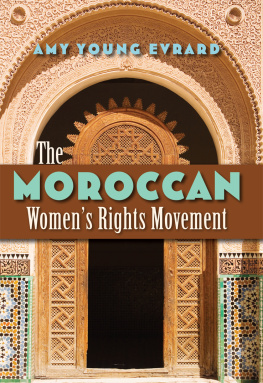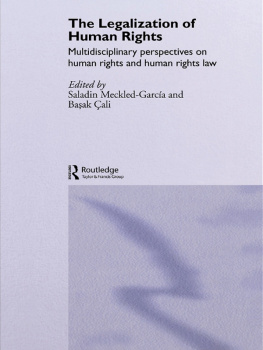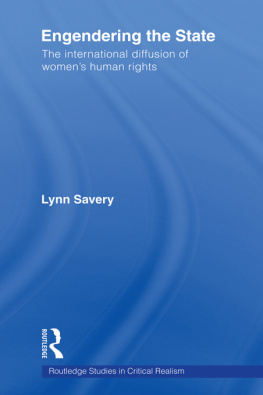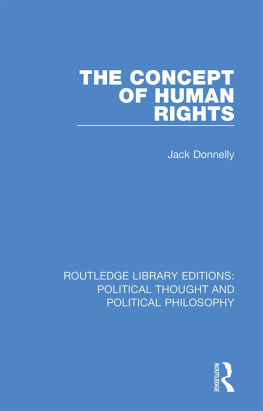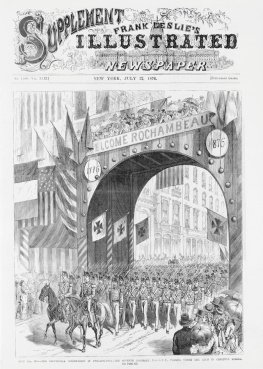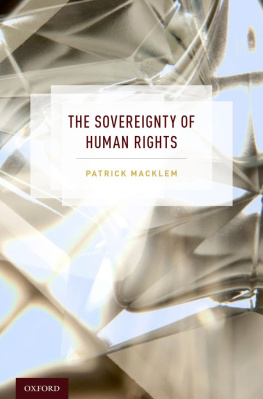Local Action
Global Change
Local Action
Global Change
A Handbook on Womens Human Rights
Julie A. Mertus and Nancy Flowers
First published 2008 by Paradigm Publishers
Published 2016 by Routledge
2 Park Square, Milton Park, Abingdon, Oxon OX14 4RN
711 Third Avenue, New York, NY 10017, USA
Routledge is an imprint of the Taylor & Francis Group, an informa business
Copyright 2008 Chemonics, Julie A. Mertus, Nancy Flowers
All rights reserved. No part of this book may be reprinted or reproduced or utilised in any form or by any electronic, mechanical, or other means, now known or hereafter invented, including photocopying and recording, or in any information storage or retrieval system, without permission in writing from the publishers.
Notice:
Product or corporate names may be trademarks or registered trademarks, and are used only for identification and explanation without intent to infringe.
Library of Congress Cataloging-in-Publication Data
Mertus, Julie A., 1963
Local action/global change : a handbook on womens human rights / Julie A. Mertus and Nancy Flowers.
p. cm.
Includes bibliographical references and index.
ISBN 978-1-59451-514-9 (hardcover : alk. paper)
1. Womens rightsHandbooks, manuals, etc. I. Flowers, Nancy. II. Title.
HQ1236.M428 2008
323.34dc22
2007045739
ISBN 13 : 978-1-59451-514-9 (hbk)
ISBN 13 : 978-1-59451-515-6 (pbk)
Designed and typeset by Mulberry Tree Enterprises.
Contents
Local Action/Global Change reflects the efforts and voices of many people around the world. We are very grateful for the generous support the book has received through the several years and drafts that have led to this publication.
Had not Roxanna Carrillo of the United Nations Development Fund for Women (UNIFEM) and Charlotte Bunch of the Center for Womens Global Leadership (CWGL) believed in this project, it would never have come to fruition. We also thank UNIFEM consultants Daniella van Gennep and Jane Summer and CWGL staff members Deevy Holcomb, Shona Chakravartty, Surabhi Kukke, Lisa Clarke, and Lucy Vidal for their support.
We would especially like to acknowledge the work of Janet Lord, who wrote most of , Womens Human Right to an Adequate Standard of Living, and, with Kathy Guernsey, improved the content on women with disabilities. Beyond these contributions, Janet and Kathy warrant special appreciation for their continued support of us, the book, and human rights education.
We also give our warm thanks to:
Inspiring leaders in human rights education Mahnaz Akhfani, Loretta Ross, Margaret Schuler, and Krsiti Rudelius-Palmer
Krishanti Dharmaraj and Mallika Dutt
Shulamith Koenig and the Peoples Decade for Human Rights Education
Sonja Licht and the Soros Yugoslavia Foundation
Larry Cox, Helen Neuborne, and the Ford Foundation
Sevdie Ahmet, the International Working Group on Refugee Women, Tara Krause, Katrine Kremmler, Mobility International USA, Zorica Mrsevic, the Older Womens Network of London, Hitha Prabhakar, Judy Persky, Debra Robbins, and Rachel Wareham
Stephanie Urdang, Liz Fisher, Sofia Gruskin, Lucie Lamarche, Lyn Reece, and Daniel Ravindran
Susan Fried, Leila Hessini, Janine Hicks, Vesna Kesic, Saraphina Maboso, Ali Miller, Betty Powell, Beth Richie, Ruth Selwyn, Olena Suslova, Dorothy Thomas, Mariama Williams, and Felice Yaban
Jennifer Forrence, Kathy Forrence, and Shirley Steele
Jelica Todosijevic, Ted Andersson, and Daniel Sumit Ghosal
Student researchers at American Universitys Ethics, Peace, and Global Affairs Program Alison Long, Laura K. Ritter, and Laurie Rosenberger
Jane Gindin, Paula Kentworthy, Martha Moses, Samantha Parsons, Mary Hill Rojas, Anita Sachariah, and Kelly Scott Vaena.
We dedicate this book to Julies children Lynne and Daniel and to Nancys granddaughter Emmeline, who remind us daily why we work for a better world.
Womens rights are human rights has become an important rallying cry for women around the world over the past two decades. It expresses both womens determination to claim their full birthright as one-half of humanity and their exasperation that such an obvious assertion has taken so long to gain international acceptance. As the recognition of womens and girls human rights has grown, so too has the need for more works that explore and expound upon their meaning.
Local Action/Global Change speaks to this need through human rights educational materials that explain and give examples of issues in womens human rights, while also providing learning activities that allow for exploration of the ways in which these questions affect the lives of all peoplenot just women and girls but men and boys as well.
The idea that womens rights are human rights is at once both simple and complex. Its power lies in the fact that it is simultaneously ordinary and revolutionary. On the one hand, it is common sense to declare that as human beings, women and girls have human rights. On the other hand, it is a radical reclamation of womens humanity and right to equalitya reclamation that has transformative potential. The full incorporation of womens and girls lives into human rights concepts and practices exposes the failure of countries worldwide to accord females the human dignity and respect they deserve simply as human beings.
Denial of human rights means denial of the fundamental components of being human. It means the dehumanization of women, which fosters discrimination and violence against women and girlsfrom rape during wartime to economic exploitation and culturally rationalized restrictions on basic freedoms. Human rights principles demand an end to practices that treat women and girls as less than full human beings. Thus, the language of human rights assists in the task of identifying not just the violators, who must then be held accountable, but also the appropriate remedies for such abuses.
Womens peripheral status has been exacerbated, and sometimes rationalized, by the division of life into public and private spheres that prevails in so many societies. Since the public sphere is seen as the arena of interaction between state actors and citizens, abuses of that relationship have been the focus of human rights advocacy. However, much of the abuse of women and girls is carried out by individual male partners or family members and is often overlooked by governments even when there are laws against it. Thus, many violations of womens human rights that are committed in the name of family, religion, and culture have been hidden by the sanctity of the so-called private sphere, and the perpetrators have enjoyed immunity from accountability for their actions.
The status of citizen, too, has often been exclusionary, entailing gender, racial, and socioeconomic bias and privileges that marginalize women. Indeed, as public and governmental realms are populated predominantly by men, the human rights issues given the most attention have tended to be those to which men are most vulnerablearbitrary detention, political imprisonment, torture, and abuses of civil and political rights, such as the rights to freedom of speech, religion, and assembly.
A human rights perspective helps to illuminate the complicated relationship that exists between gender and other aspects of identity, such as race, class, religion, age, sexual orientation, disability, culture, and refugee or migrant status. From this perspective, discrimination and violence against women and girls can be understood as having been shaped by the ways in which gender interfaces with such factors. An example of human rights violations that entail discrimination on the basis of class and race as well as genderone example among manyis the forced sterilization of poor women in certain countries.




